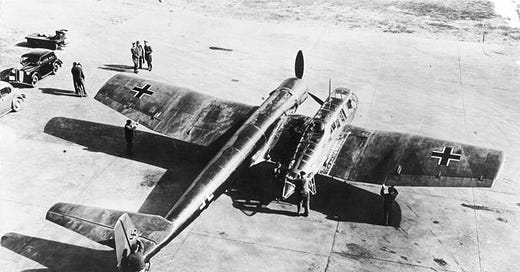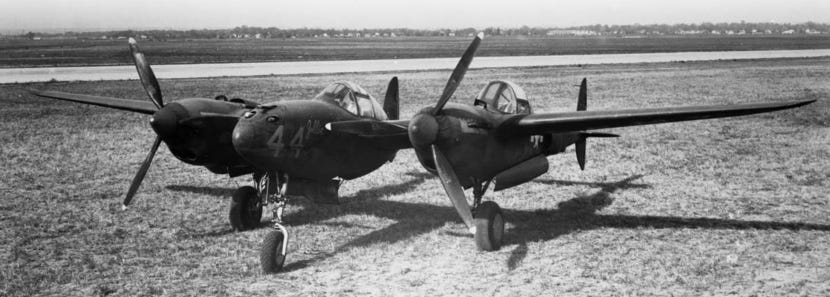Despite in many cases possessing design advantages, very few profoundly asymmetric aircraft have been constructed. There is no obvious reason for this but it may just be that they are not trusted. For example, the proposed initial design of the Boeing 727 trijet featured a layout that Boeing calculated would be the most efficient with two engines under one wing and one under the other but was rejected by airlines as it was believed passengers wouldn't like it.
Exceptions prove the rule though, so here's a rundown of ten flying machines that not only existed but actually flew and for one reason or another managed to slip the surly bonds of symmetry.
10. Canopy capers: Lockheed RP-38
Provided an aircraft is of sufficient size it can sometimes makes sense to move the pilot to one side or the other to allow other crew to get past or to improve the view from the pilot's seat. The Sea Vixen and some variants of the Canberra offset the canopy, allowing the pilot a lovely view whilst simultaneously confining other crewmembers in the depths of the fuselage with merely a tiny window to peer out of. In the case of the Sea Vixen this was allegedly done to cut out extraneous daylight and render the cabin dim enough for the feeble brightness of the radar scope to be visible, whilst the Canberra's asymmetrical hood derives from the navigator's position being moved but the pilot's remaining the same: "He'll be fine there. Just cover him with a smaller canopy" said Teddy Petter (probably). Some ten years earlier the Yermolaev Yer-2 (which remains obscure despite enjoying a long service life and intensive wartime action) shifted the pilot to the left under an offset canopy to improve downward view over the nose, meanwhile most variants of the rather better-known Heinkel He 111 employed a wonky nose to allow the pilot to see past the front gun cupola. The most extreme example of canopy relocation however remains the RP-38: in order to test whether a pilot's position some distance from the centre line of the aircraft would prove problematic, the first production P-38 Lightning was modified by removing the turbosupercharger and replacing it with a cockpit in the left hand tailboom. The results were successful and this research paved the way for the P-82 Twin-Mustang with crew members in each of its twin fuselages, as well as producing the most distinctive Lightning variant to fly.
Left to right: the Sea Vixen, Canberra, Yer-2 and He 111 show off their respective glazing irregularities
Keep reading with a 7-day free trial
Subscribe to Hush-Kit Aviation Newsletter to keep reading this post and get 7 days of free access to the full post archives.






